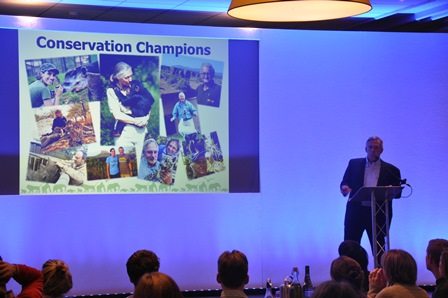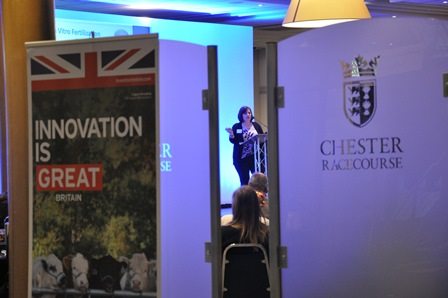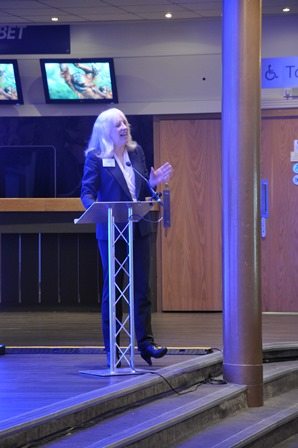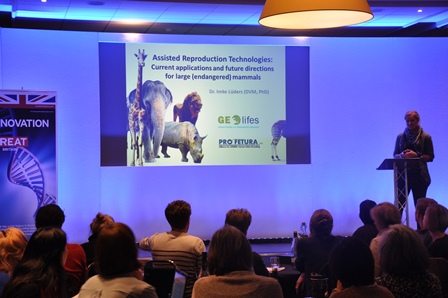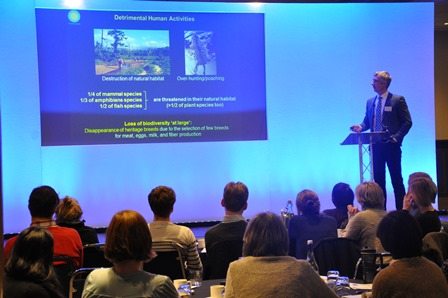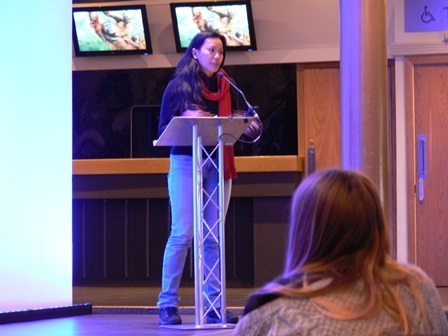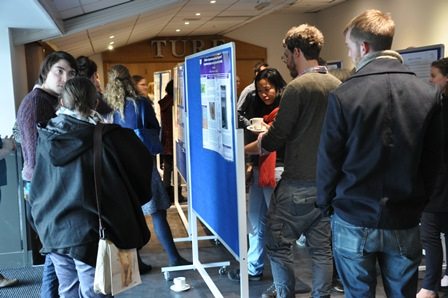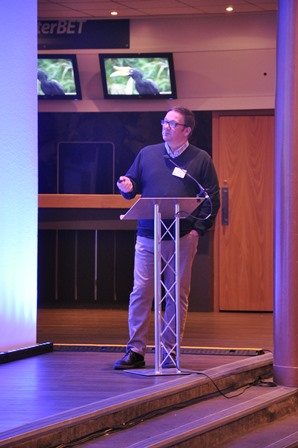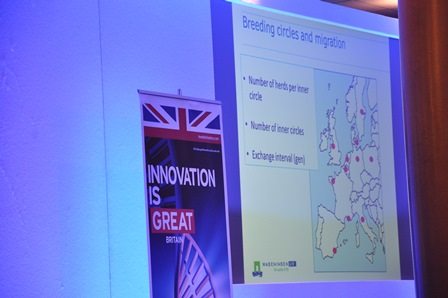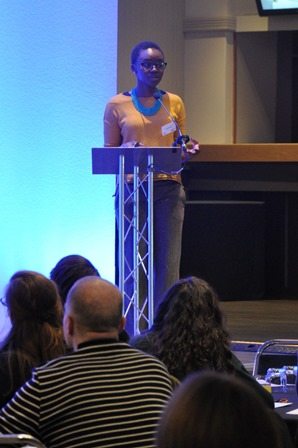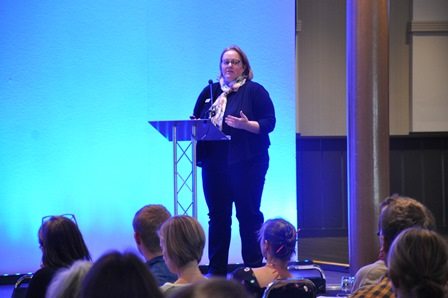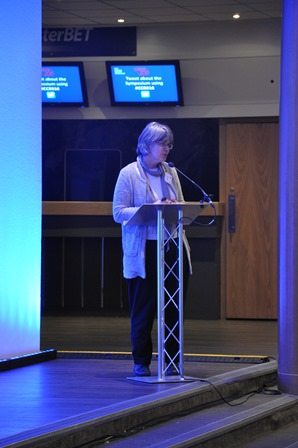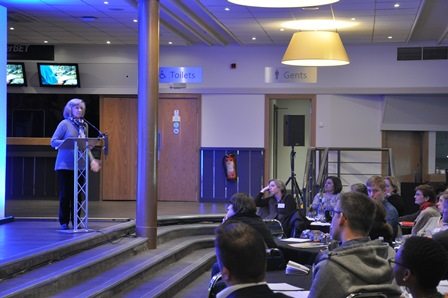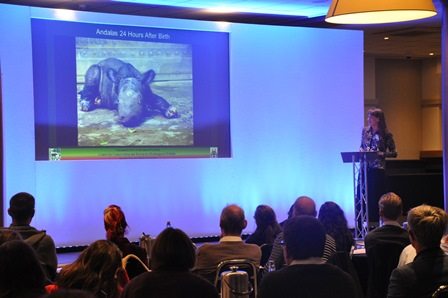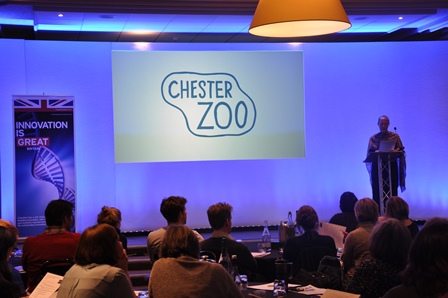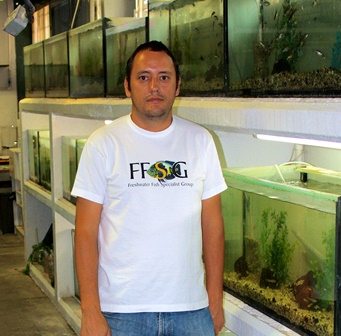Tag: Protecting animal populations
Since starting at the zoo back in January, Johanna has been exceptionally busy! She looks after and develops all of the projects we work on across South East Asia.
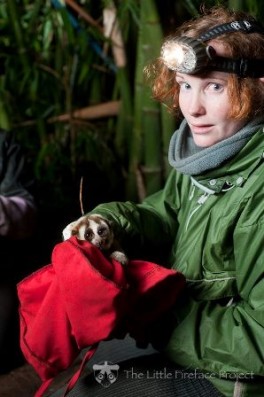
Johanna has recently returned from a trip to Java where she visited our field partners at the Cikananga Conservation Breeding Centre (CCBC), alongside Chester Zoo curator of birds, Andrew Owen, head of field programmes, Scott Wilson, and Javier Lopez, veterinary manager.
Together with CCBC we are working hard to save critically endangered bird species, such as the black winged starling and Javan green magpie, from disappearing from the face of the Earth.
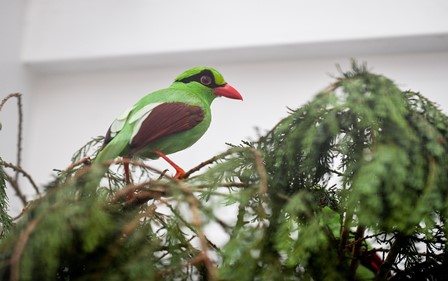
We are doing this through conservation breeding programmes, whereby they are managing a population in the breeding centre as an insurance population for the wild. Animals from this population may then to be released into the wild to increase population numbers.
Unfortunately, it is hard to find a secure and suitable release site for the birds due to the illegal wildlife trade. South East Asia, and especially Indonesia, is currently facing a massive songbird crisis where birds are captured and trapped to be used either in singing competitions or kept in cages as a status symbol, displaying the owner’s wealth.
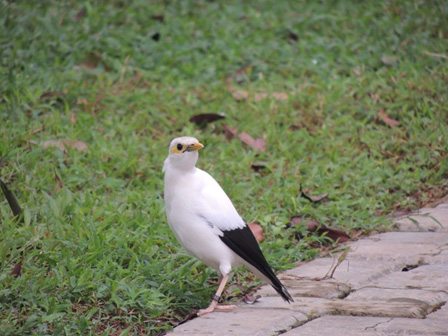
As a result of these deeply-rooted traditions, the forests of South East Asia are falling silent and the birds that CCBC hope to release would be at risk of disappearing into one of the notorious birds markets on the island.
During the trip the Chester Zoo team visited the biggest of these bird markets in the capital of Indonesia – Jakarta – where protected wild caught species can often be found and are traded illegally.
A large part of Johanna’s time on the trip was spent helping CCBC field staff explore and identify potential secure release sites for the black winged starlings that the centre have been working so hard to breed. Several sites were identified as being suitable, probably providing all of the ecological parameters necessary for the birds to establish healthy populations. The next step will be to decide which of the identified sites will provide enough security and allow for close and daily monitoring of the birds.
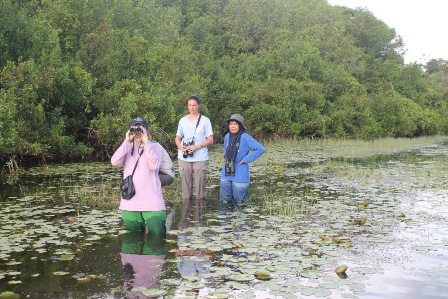
Andrew and Javier continued their technical support to the centre by providing expert advice on husbandry and veterinary practices. Andrew looked over the breeding practices and advised on the construction plans of new aviaries that would replace the old ones that are in danger of collapsing due to the destructive humidity. Javier trained the new vet and some of the field staff at the centre in veterinary practices such as microchipping.
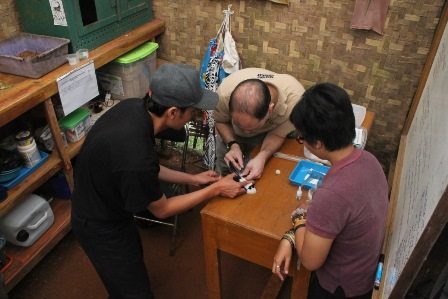
Watch this space for more updates from Johanna and work we’re doing in South East Asia. In the meantime, catch up on the work we’ve been doing with the Cikananga Conservation Breeding Centre in Java, here.
If you’d like to connect with Johanna take a look at her biography page on the Chester Zoo website here.
The symposium brought together breeders and population mangers from commercial and conservation backgrounds to share ideas and techniques. The meeting gave delegates the opportunity to hear first-hand about current practices, lessons learned, the reality of implementation and future developments and meet new people and potential collaborators.
Day one of the symposium was a ‘Meet the Scientists’ day at Chester Zoo. We ran a guided tour around the zoo stopping at various enclosures to hear from our staff and students undertaking conservation breeding work. We told the speakers and delegates about our work including conservation breeding of black rhinos, our work with orangutans in their new enclosure in Islands and how we use contraception.
The two days of the symposium itself were held at Chester Racecourse and we were very excited to welcome a number of international speakers who flew in especially for the event.
Have a look through the gallery below to see the full story of the symposium:
For our science to be useful, successful techniques and results must be translated into animal management by communicating with academics, captive animal managers, wild population managers and funders to have a positive real-world impact on species conservation.
Keep up to date with our science work by keeping an eye on our blog or by following us on Twitter here.
Chester Zoo’s golden mantella frogs are playing an increasingly important role in conservation as their species is critically endangered in the wild. The reintroduction of endangered species into their natural habitat has sometimes proved difficult – it’s not just as simple as putting them back in the wild.
By evaluating the ‘fitness’ of the zoo population of golden mantella we can then improve the success of reintroduction attempts. Chester Zoo Conservation Scholar Luiza Passos is a PhD student at the University of Salford. She has been working closely with our curator of lower invertebrates and invertebrates, Gerardo Garcia, and team manager of lower vertebrates and invertebrates, Ben Baker, to evaluate the population of golden mantella at the zoo.
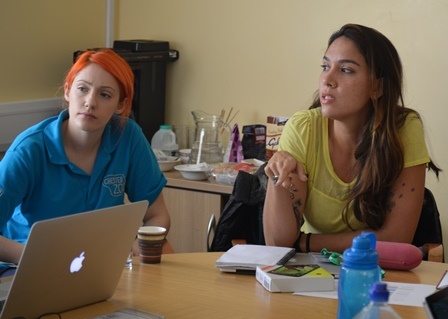
Luiza Passos (right) at Chester Zoo discussing her research with staff
Their research involves measuring the characteristics of golden mantellas, such as color patterns, vocalisation, body condition and behaviour at the zoo, and comparing this to the information gathered in the field in Madagascar. The aim is to increase our understanding of where conditions can be enhanced to ensure optimal fitness for future in-situ generations of golden mantella.
Below Luiza tells us more about her research:
“In zoo conservation breeding and reintroduction is becoming a high profile conservation tool for many species threatened with extinction. However, before reintroducing any species back into the wild, research is needed to help make more informed decisions and improve the success rate.
“The reintroduction of endangered species into their natural habitat has proved difficult. If animals are to be released into the wild these questions need to be addressed. With this in mind I decided to target my PhD research on measuring the characteristics of golden mantellas at the zoo and comparing these to the information gathered in the field in Madagascar.”
The aim of Luiza’s research is to increase our understanding of where conditions can be enhanced even further to ensure optimal fitness for future in-situ generations of golden mantella and increase the success of reintroduction programmes.
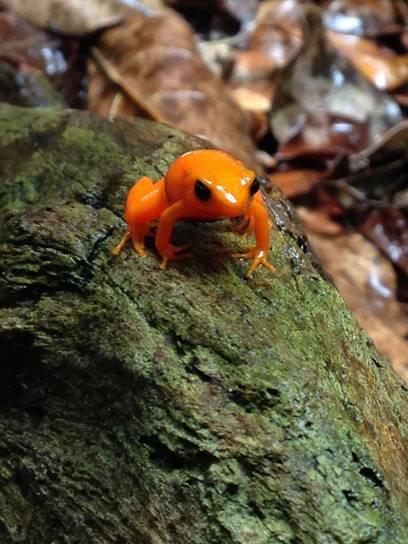 Golden mantella frog. Photo credit: Luiza Passos
Golden mantella frog. Photo credit: Luiza Passos
“The species I focused my research on is the golden mantella frog (Mantella auriantaca) from Madagascar. These amazing little creatures are endemic to Madagascar and are currently considered by the IUCN Red List as ‘critically endangered’ due to habitat destruction (mainly mining) and over exploitation for the pet trade market. Reintroduction is one of the many conservation tools described on the species’ conservation action plan to help save it from extinction in the wild.
“I will be analysing a variety of characteristics that are crucial for the survival of golden mantellas in the wild such as:
Skin coloration – this is important for finding a mate and keeping predators away.
Skin microbiota – this is a measurement of their immune system capabilities.
Vocalisations – this is important for attracting a mate.
Body condition – this shows how healthy individuals are.
“Data from a healthy wild population is being used as a baseline for comparison with a variety of populations in the UK and Madagascar. I have already had the opportunity to go to Madagascar twice in for fieldwork to collect data from a wild population. Field work in Madagascar is a truly amazing experience; waking up each day to the sound of indri lemurs and seeing all these tiny orange frogs hoping around the forest floor is just beyond words! The fieldwork is done in partnership with Chester Zoo’s project partners Madagasikara Voakajy.
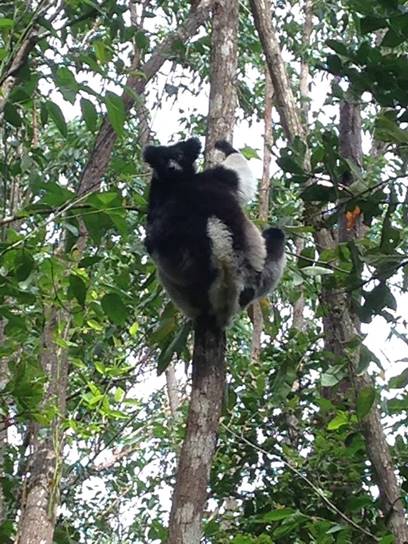 Indri lemur. Photo credit: Luiza Passos
Indri lemur. Photo credit: Luiza Passos
“On my second trip to Madagascar I also had the opportunity to visit Andasibe and collect data from a conservation breeding centre at the Mitsinjo Association. Housed at Mitsinjo is a founder population of golden mantellas and their first offspring as a genetic resource, or safety net population, for future reintroduction programmes.
“In addition to fieldwork in Madagascar I have also been collecting data from the population at Chester Zoo to be compared with wild and Mitsinjo’s animals. At the moment I am analysing all the data I have collected from all these different populations to be able to understand when reintroduction would be a viable option for this species. I already have some preliminary data, which shows some reassuring results, such as the fact that the Chester Zoo population is very healthy. There is still a lot of work to be done in my PhD before I have some definitive conclusions. I’ll keep you updated with progress of my research.”
If you want to hear more from Luiza and learn more about her PhD work – which is funded through a scheme based in Brazil called ‘Science without Borders’ – watch this video created by the University of Salford.
Most of the species at Chester Zoo are part of breeding programmes. These programmes help to manage animals between different zoos as self-sustaining populations which is vital for those species that are on the brink of extinction in the wild; providing an “insurance” population.
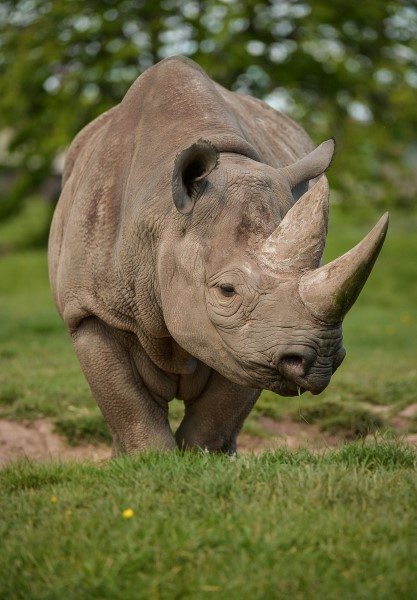
But conservation breeding isn’t just about successful reproduction; in some cases the science and animal teams have to prevent when their species breed. Therefore, wildlife contraception is an important tool in the genetic organisation of animals at zoos.
Our teams at the zoo work extremely hard to make sure every effort goes into ensuring the highest standards of welfare and the best care is given to all the animals. The animal care teams work very closely with our science team to make sure the many species at Chester Zoo remain healthy.
Contraception is used to help zoos maintain sustainable population numbers; when housing family groups it is important to ensure numbers don’t grow beyond the resources and space available to them. It also prevents inbreeding.
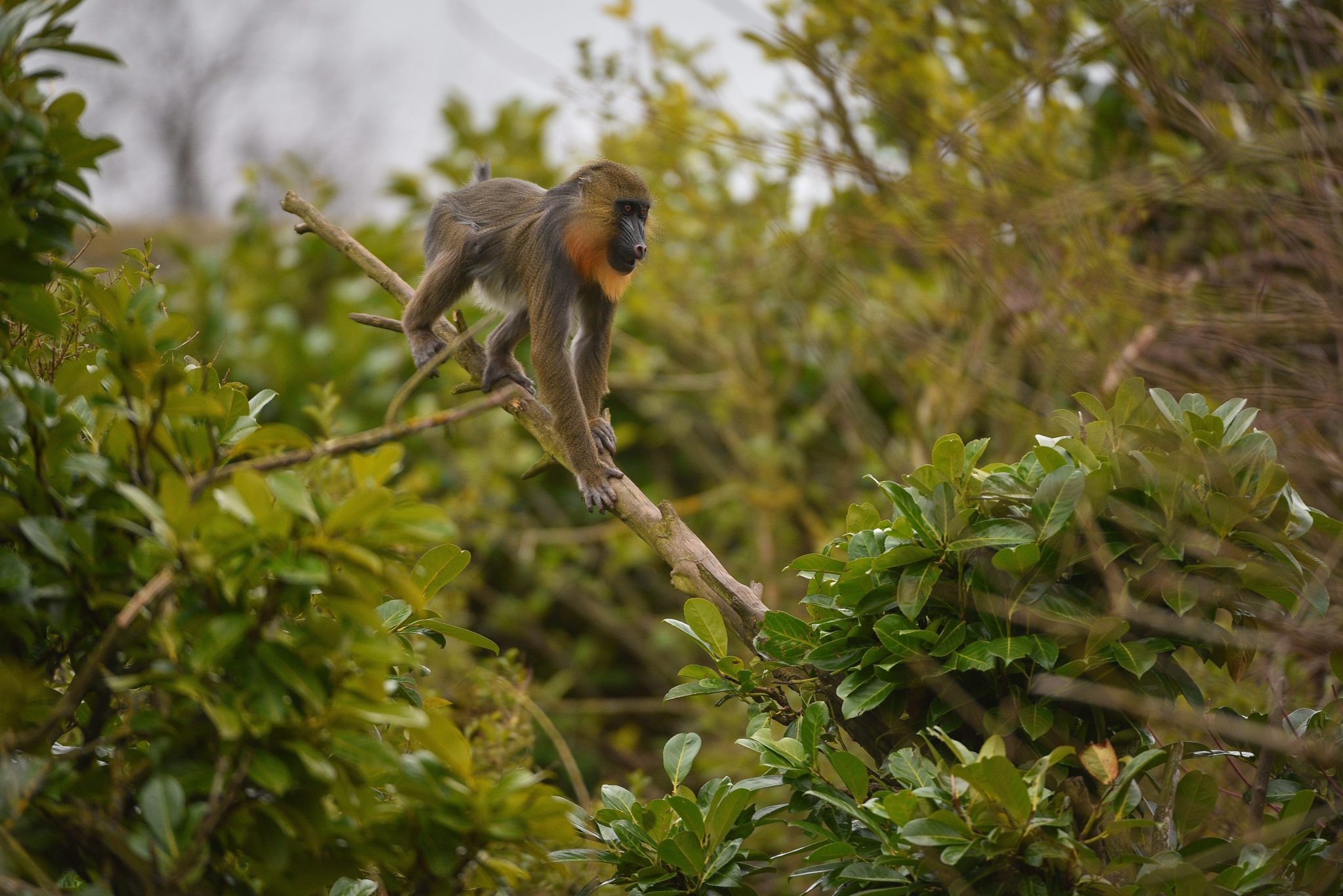
It can also be used to change undesirable sexual behaviours and to manage aggression. Although animals will naturally experience conflict through competition for mates and food, contraception allows zoos to house their animals in large social groups without the worry of escalating aggression. This is particularly true when multiple males are housed together, especially as they begin to reach sexual maturity.
Prior to the introduction of contraception, zoos had three main options when it came to managing populations: separate males and females, struggle to care for animals exceeding available resources, or in some cases, cull unwanted young.
Animal contraception also has been used for managing animals in reserves or in the wild, controlling aggression in bull elephants going through musth (during this time a bull elephant can produce up to 40 – 60 times more testosterone), or controlling the population size of New York City sewer rats!
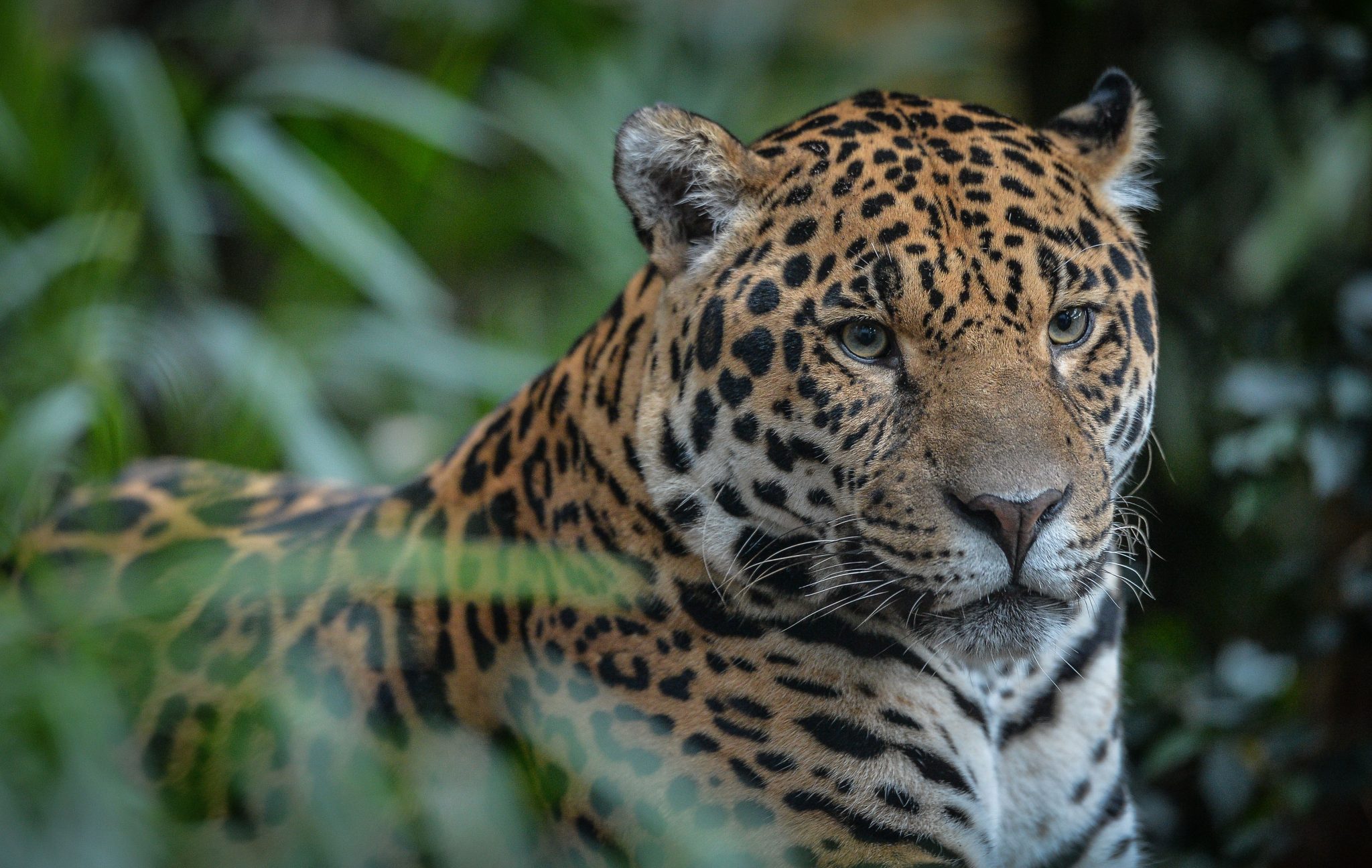
Choosing the correct contraceptive for the species and situation is not a simple case of ‘one size fits all’ as, given the different physiology and life histories of different animals, contraceptives can have remarkably different effects. A prime example of this is the use of progestin based contraceptives; although frequently used in ungulates and primates, use in canids has been associated with uterine pathology and infection and uterine and mammary cancer in felids.
Although many methods of contraception are available, providing safe and effective contraception for species with very different reproductive physiologies can be a major challenge. Contraceptive options available to zoos are usually not specifically designed for use in exotic wildlife.
Wildlife contraception is still very much an emerging field, and while knowledge on contraceptive use is extensive, it is patchy in distribution within the global zoo community. In an effort to centralise contraceptive information, the AZA Reproductive Management Center (RMC) and the EAZA Group on Zoo Animal Contraception (EGZAC) share a database detailing the efficacy of different contraceptive methods.
This database now holds nearly 35,000 entries and has been essential in aiding conservation breeding through the design of contraceptive guidelines in a variety of species.
Amphibians have been treated in the wild for the first time against the global chytridiomycosis (‘chytrid’) pandemic currently devastating their populations worldwide, as part of a pioneering study involving conservation scientists from Chester Zoo.
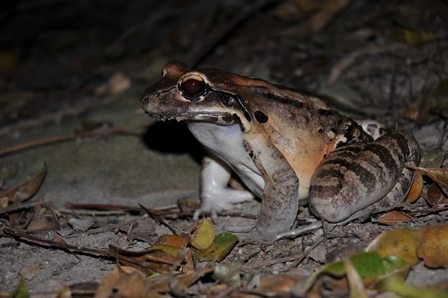
Published in the journal Biological Conservation and conducted in partnership with the Zoological Society of London (ZSL), the Durrell Wildlife Conservation Trust, the University of Kent and the Government of Montserrat, the paper describes how the established antifungal drug itraconazole can be used to treat amphibians in the wild during periods of particular risk from chytrid outbreaks.
Frogs were individually washed for five minutes at a time in a bag containing the anti-fungal bath. While this measure was not ultimately able to stop them dying, the paper demonstrates that this technique has potential to greatly extend the likely time to extinction for any given amphibian population in the face of epidemic disease.
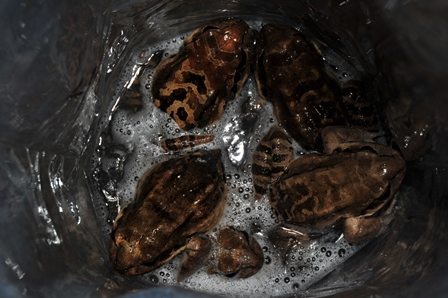
Caused by the fungus Batrachochytrium dendrobatidis (Bd), this chytrid variant has so far infected more than 600 amphibian species globally – causing population declines, extirpations or extinctions in over 200 of these and representing the greatest disease-driven loss of biodiversity ever recorded. Whilst captive breeding programmes offer hope for some, the International Union for Conservation of Nature (IUCN) currently estimates that even with the cooperation of the global zoological community, only around 50 species could potentially be saved from extinction through this approach. Proven, field-based methods will therefore play a vital role in mitigating the risk posed by this disease.
Commenting on the paper, lead author Michael Hudson – jointly based at ZSL’s Institute of Zoology (IoZ), Durrell and the University of Kent – said:
“This method represents a valuable addition to the currently sparse toolkit available to conservation scientists who are trying to combat the spread of chytrid in the wild. The treatment explored in this paper could be used to buy precious time in which to implement additional protective measures for at-risk amphibian species.”
The study, funded by the People’s Trust for Endangered Species (PTES) and the Balcombe Trust, was based on ZSL and Durrell’s long-standing work with the ‘mountain chicken’ (Leptodactylus fallax). This critically endangered species, one of the largest frogs in the world, lives exclusively on the islands of Dominica and Montserrat in the Eastern Caribbean.
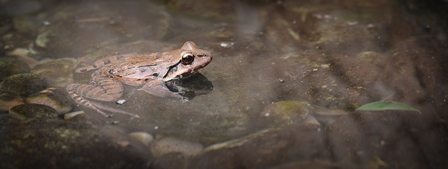
Expanding on the study, PTES Grants Manager Nida Al-Fulaij said:
“This latest breakthrough provides conservationists with an additional weapon in the global fight against amphibian chytridiomycosis. We’re pleased to be supporting this vital work as part of our wider mission to conserve vulnerable wildlife in the UK and beyond.”
Read this blog update from Chester Zoo herpetology keeper,explaining the critical situation many frog species are currently facing and the important role zoos play in helping to protect these critically endangered animals in the wild.
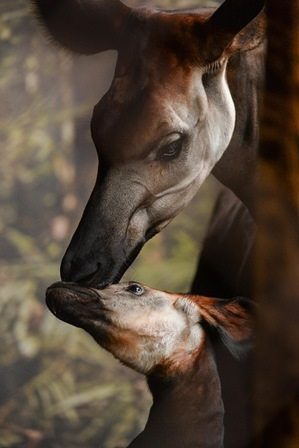
This method can tell us whether an animal has reached puberty, whether the animal’s menstrual cycle is regular and also predict the best time to introduce a potential breeding pair.
This knowledge can boost the number of successful pregnancies and contribute to the conservation of the species. We can also diagnose pregnancy and predict when the animal will give birth, giving the animal teams the necessary time time to make preparations for the mother and baby.
As we’ve mentioned before, we do this by collecting poo! It’s not the most glamourous of jobs, but it is an extremely important one!
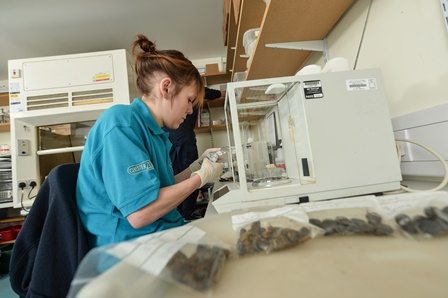
Most of the species at Chester Zoo are part of breeding programmes. These programmes help to manage animals between different zoos as self-sustaining populations which is vital for those species that are on the brink of extinction in the wild. It provides an “insurance” population.
The animal care teams collect regular dung samples from their animals and send them to the lab for analysis. We are very proud that zoos from across Europe also send their samples to Chester to have their population management questions answered.
Although we can measure hormones using other bodily tissues and fluids, such as blood serum, urine and hair, poo is easily collected whilst cleaning enclosures and less intrusive for our animals. Our ground-breaking science has helped a number of births at the zoo including our latest black rhino calf whose arrival was predicted back in January 2015.

Not only do we contribute to the breeding success of animals in zoos but we are also involved in numerous research projects in the wild. We work with a number of collaborators whose research is dedicated to protecting endangered species through conservation breeding and management.
In March 2016, we hosted the Cheshire Breeding Symposium as part of the Britain is Great initiative. This event brought together specialists from around the world to discuss future directions for research in this field and our own head of applied science, Dr Sue Walker, delivered a talk on the reproductive management we do here at the zoo. Read more about the Conservation Breeding Symposium here.
Chester Zoo is now home to ten Eastern black rhinos following the birth of male calf Gabe earlier this month.
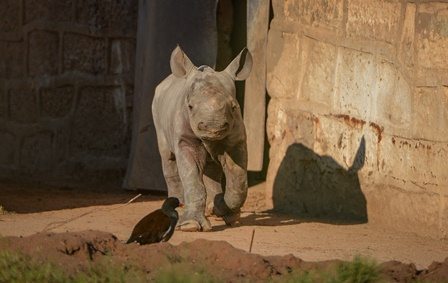
With less than 650 now believed to be left in the wild, the new arrival was a welcome addition. Eastern black rhinos are listed by the International Union for the Conservation of Nature (IUCN) as critically endangered in the wild, which is why we’re part of a successful breeding programme.
Our scientists and animal care staff have contributed to the zoo’s successful black rhino breeding programme. We have spent several years carefully monitoring the hormone levels of the resident female rhinos in a bid to discover the best time to introduce them to a potential partner.
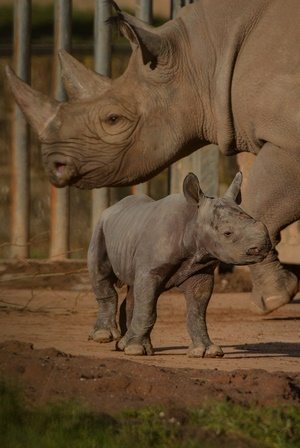
These hormone levels are monitored by analysing rhino dung – yes, rhino dung! Our zoo keepers regularly collected rhino dung samples from each of our female rhinos and pass them over to the lab at the zoo for testing. It is then broken down and the team are able to extract all sorts of hormonal indicators from it.
Tracking hormones gives an insight into what is going on inside the animals. It can help tell us things like whether or not an animal is a seasonal breeder, whether it has reached puberty, whether it’s cycling on a regular basis or not and when the optimum time to introduce a male to a female is, as well as diagnose pregnancies and estimate when an animal will give birth.
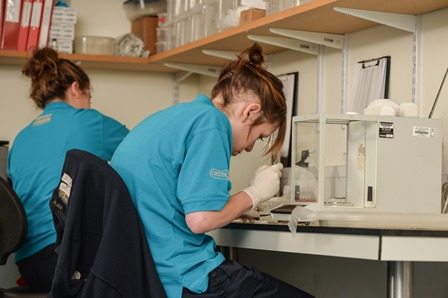
Chester Zoo has been successful in breeding a number of critically endangered black rhinos and plays a vital part in the international breeding programme. Our director general, Dr Mark Pilgrim, is responsible for managing the European breeding programme for this species.
In recent years the European population has seen an increase in birth rates – which is great news! This is as a result of research from scientists from Chester Zoo, The University of Manchester and The University of Liverpool who assessed the reproductive performance of the European captive population of Eastern black rhinos to identify where improvements could be made along with hard work from all the animal care staff who look after the rhinos.
Read more about the rhino dating game, here.
We are really proud to have been supporting a ‘Fish Ark’ conservation project in Mexico for over 10 years! Here’s an update from Dr Omar Dominguez at the Michoacán University of Saint Nicholas of Hidalgo:
“The Fish Ark is a conservation project in Central Mexico looking at 41 species of endangered, and even extinct, ‘in the wild’ Mexican fish. Here in Central Mexico we have a particularly high number of fish species – about 100 species in total and importantly, 70% of these are endemic. We are considered by the World Conservation Monitoring Centre to be a region of special interest for the conservation of freshwater fishes.
Chester Zoo has been helping to fund the Fish Ark Project since it began in 1998, enabling us to build 130 aquariums, buy food and pond equipment and build three soil ponds. Without this support the project simply could not exist.
“However, increasingly the freshwater environments in this region are being severely altered by activities such as the introduction of exotic species and their associated parasites, pollution, water extraction, deforestation and overfishing – and these factors are all contributing to a decline in these native species.
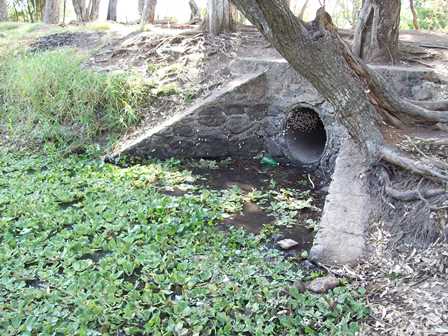 Waste outlet into fresh water source. Photo credit: Omar Dominguez
Waste outlet into fresh water source. Photo credit: Omar Dominguez
“Our project has been looking at two fish groups in Central Mexico: the goodeines and cyprinids. The goodeinae is a subfamily composed of around 41 species that have evolved over the last 16 million years; most of the goodeinae are endemic to (or found only in) our region, some are even endemic to only a small part of the river or even a single spring! This group also has very unique reproductive characteristics and is considered one of the most at-risk groups in the world.
“The cyprinid group of Central Mexico has evolved during the last 15 million years and has a high level of evolutionary distinctiveness which makes them very interesting to the programme and to our understanding. We also work with two ambystoma species (a type of salamander), which are amphibians. These two species reproduce in the larvae stage and never have a metamorphic phase; only three of the, around, 30 species of ambystoma reproduce in this way. For these reasons, conservation of these species and restoration of these freshwater ecosystems is urgent.
“The Fish Ark Project is working to prevent extinction of these species through conservation breeding; in the longer term, the project aims to help solve the wider environmental problems in the waters where the fish live in the wild.
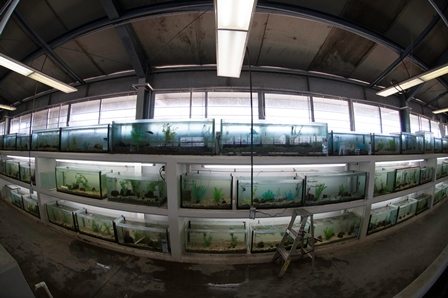 Just some of the tanks at the conservation breeding centre. Photo credit: Juan Miguel Artigas Azas
Just some of the tanks at the conservation breeding centre. Photo credit: Juan Miguel Artigas Azas
“We are working to give these endangered species the best chance to be re-introduced to the wild where they can thrive. Most of the species in the Fish Ark are highly endangered and some are now extinct in the wild; the project has already saved three endangered species and five more could be saved.
“We are also building soil pond facilities in order to maintain a big number of endangered species, but as the soil ponds are semi-captive we hope that this will make it easier to reintroduce the new populations to the wild when the time comes.”
Since writing this blog for us, Omar has been extremely busy in the field and the next update from this project brings exciting news about a new species…so, watch this space!
It is our mission to Act for Wildlife and be a major force in conserving biodiversity worldwide. We wouldn’t be able to do this without people – it’s a combination of our field conservation, conservation science, research, conservation breeding, animal welfare and education teams who together protect endangered wildlife.
All staff at Chester Zoo are dedicated to protecting biodiversity and fighting to save species from extinction; whether it’s within the zoo, in the UK or overseas. Most of the species at Chester Zoo are part of conservation breeding programme. These programmes help to manage animals between different zoos as self-sustaining populations which is vital for those species that are on the brink of extinction in the wild. It provides an “insurance” population.
The black rhino is a charismatic species which, devastatingly, is threatened with extinction due to severe poaching pressures (read more about the work we’re doing to protect rhinos from this serious threat). It’s at risk of following in the footsteps of the western subspecies which is almost certainly extinct.
One of the challenges those managing the numbers for the insurance populations face is ‘how do we get them to breed?’
The black rhino (Diceros bicornis) showcases the delicate nature of conservation; as a steady increase in wild numbers over the last 20 years is threatened to reverse due to an increase in poaching across Africa. With wild populations under increasing pressure, ex-situ populations play a vital role as a genetic reserve for their wild relatives.
But for population managers to maximize the contribution of zoo animals towards species conservation, it is important that populations are self-sustaining and that the genetic diversity representative of the wild population is maintained.
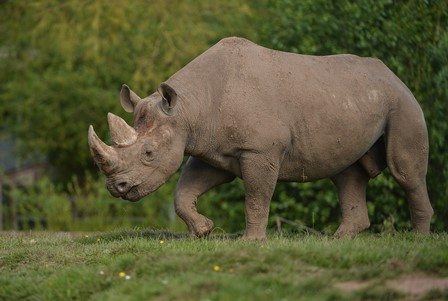
In the case of the eastern black rhino, although some rhinos breed well, a high proportion never produce offspring, limiting the genetic diversity that can be passed onto the next generation.
Scientists from Chester Zoo, The University of Manchester and The University of Liverpool, assessed the reproductive performance of the European zoo population of eastern black rhinos, to identify where improvements could be made.
Dr. Katie Edwards, who conducted the research as part of her doctoral research told us:
“The results highlighted that although the zoo population is growing, at a rate of only 1-2% per year, it is not increasing at the rate required to reach its conservation goals.
“Females start to breed later, wait a longer time before the birth of their next calf, and a lower proportion of females breed each year – this all leads to reduced birth rates.
“This supports what we already suspected, that the main factor limiting the growth rate of this population is that some rhinos just never breed – actually around 40% of the population, and this could have major consequences for long-term genetic diversity too.
“It is obviously important to get babies on the ground, but equally so to ensure that we are providing opportunities for all individuals to breed, so that the genetic diversity we started with in our founder population is properly maintained into future generations.
“Population managers typically base breeding recommendations on maximizing genetic diversity, but getting those chosen individuals to breed is not always as easy as it seems.
“Our biggest challenge is to understand why some rhinos perform better than others, only then can we provide the necessary conditions for all individuals to thrive.”
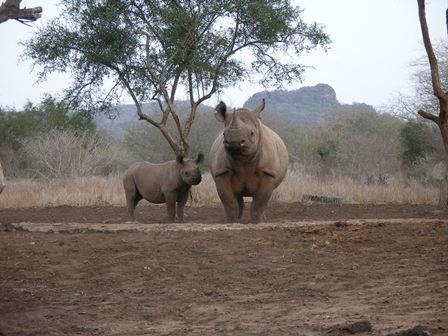
Chester Zoo’s head of applied science, Dr Sue Walker told us more:
“Conservation breeding programs incorporate population viability into routine population management, but this study took this one step further by directly comparing biological indicators with in situ eastern black rhinoceros in Kenya.
“We were fortunate to collaborate with Kenya Wildlife Service (a project we regularly work with on our rhino field conservation programme) on this work, which allowed us to compare our rhinos’ performance with that of managed in-situ populations – it showed us where there was realistic room for improvement”
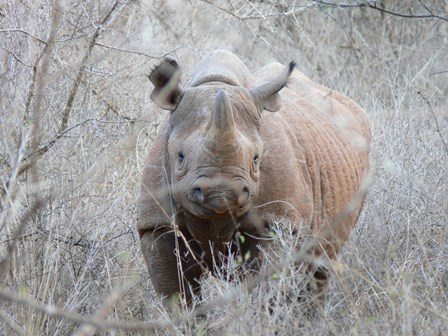
A collaborator on the research, Dr. Susanne Shultz from The University of Manchester adds:
“This sort of analysis is essential to population management, as it not only tells us how well the population is being managed, but also tells us where improvements can be made, allowing us to focus our efforts in the most beneficial areas.”
Thanks to the combined efforts of animal managers, researchers, nutritionists and keeping staff at the zoos involved in this study, the European population has seen an increase in birth rates in recent years – which is great news!
Read more: How ‘dung science’ led to a Chester Zoo rhino baby boom
An investigation into the differences between successful and unsuccessful breeders has also begun.
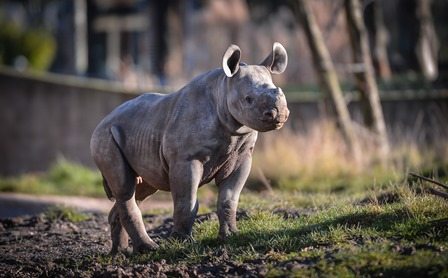
This study highlights the need for a scientific approach towards population management to understand the requirements of the species in human care – not just with the black rhino but with many endangered species conservation breeding programs.
The research has been published in the journal Biodiversity and Conservation, and is available online here more about Chester Zoo’s black rhino research can be found here.
Learn more about Chester Zoo’s breeding programmes, here.
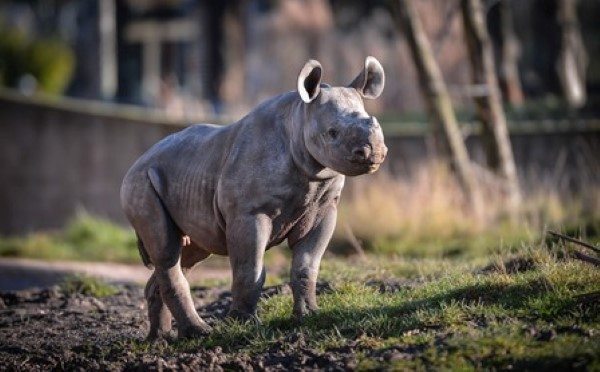
Donate to our rhino project and 100% of your money will be used to help save black rhinos in the wild.
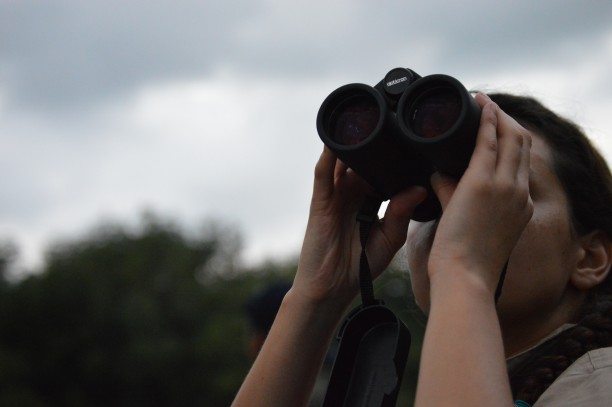
The British and Irish Association of Zoos and Aquariums (BIAZA) has created a list of the top ten birds benefitting from conservation and breeding programmes at zoos and aquariums in the UK and Ireland.
The zoo is home to six of the species on the list – the Bali starling, Northern bald ibis, Visayan tarictic hornbill, Ecuador Amazon parrot, sorocco dove and the blue-crowned laughingthrush.
Chester Zoo’s curator of birds, Andrew Owen, tells us:
“The zoo plays a significant role in supporting and protecting endangered birds on the brink of extinction. The conservation of these birds is not just about the work we do here in the zoo through our breeding programmes, but also the important work we support in the wild.
“A particular success has been the work we’ve done through a partnership with the Begawan Foundation in Bali – with the Bali starling. Just 14 years ago it was thought that only six individuals remained. However, through carefully managed breeding and reintroduction programmes that we assist with, this number has significantly increased over the last few years.
“Zoos can do so much to help birds and it’s great to be recognised for the huge amount of effort that we put into protecting very rare, endangered bird species. We care for more than half the species on the list, as well as many other highly threatened species that haven’t been listed, which is a big achievement.”
BIAZA use strict criteria to select the top ten list, as all of the species had to be associated with current field initiatives or part of essential conservation breeding in zoos, with priority being given to species listed as ‘threatened’ on the International Union for the Conservation of Nature’s (IUCN) red list of threatened species.
The top ten list demonstrates the importance of zoos and aquariums not only for conservation breeding of safety-net populations, but also for their contribution to funding and management of conservation projects in the field, including research, education and support for local communities, as well as protection of crucial wildlife habitats.
Take a closer beak, we mean peek, at the six species Chester Zoo works with:
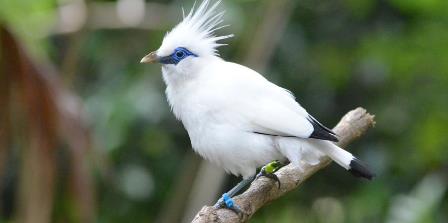
This species is seen as very desirable cage birds, and illegal trapping has brought them to virtual extinction in the wild – we work and support captive breeding programmes in Bali.
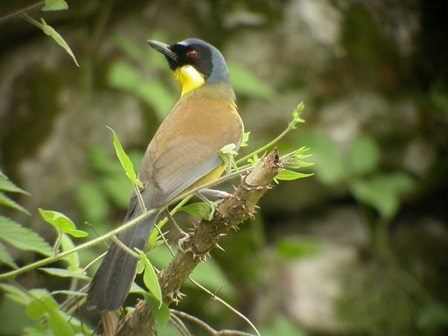
The zoo population of this Chinese bird equates to 50% of the total global population – Chester Zoo have taken the lead in coordinating the conservation effort in the wild, with captive breeding programmes occurring in mainland China.
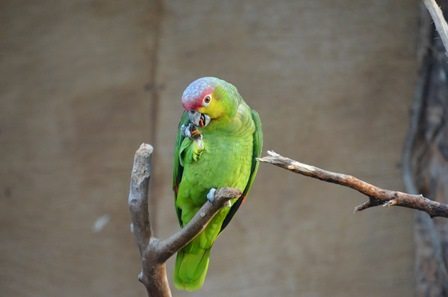
With fewer than 600 individuals left, its survival relies on the protection of remaining wild populations and their habitats –not only do we manage breeding programmes in Ecuador but we also conduct regular field research which is incremental to monitoring populations and identifying areas where protection is needed.
Northern bald ibis
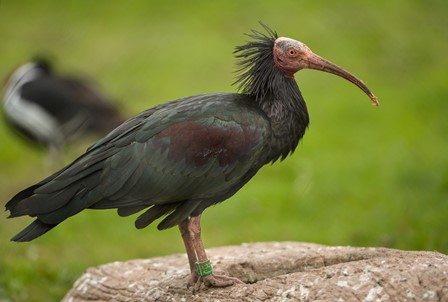
Pesticide poisoning has had a devastating effect on their numbers. The BIAZA community is working together to ensure a genetically diverse bloodline within the captive population – we have worked closely with the conservation of this species and have successfully released eight captive bred birds back into the wild. The conservation has also been a success at home with a clutch of chicks arriving in July last year.
Socorro dove
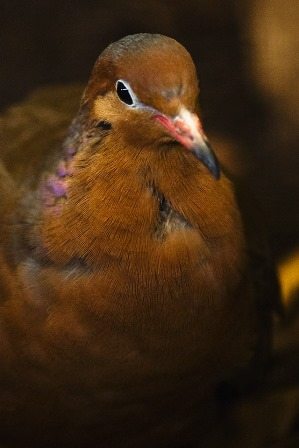
A classic island species, numbers have been devastated by man-introduced pests like rats, cats and goats. Captive breeding has saved it from total extinction – the zoo has supported this species over the last 20 years, and has worked hard to provide a growing population for the future.
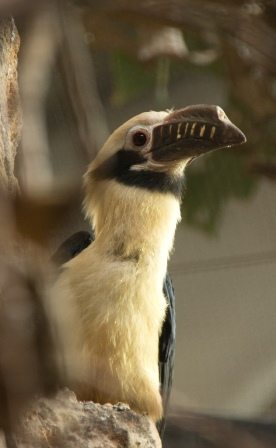
Chester and Bristol zoos are actively supporting in-situ work to save and restore the wild habitat of this species – with Chester Zoo supporting several initiatives in Panay, Negros and captive breeding programmes in the Philippines.

